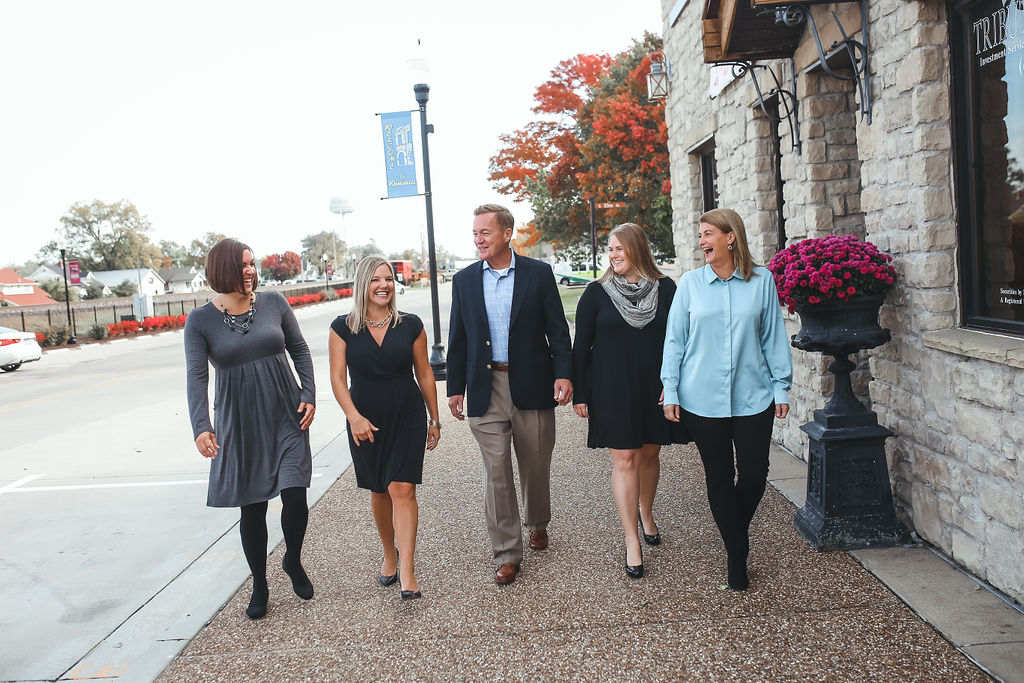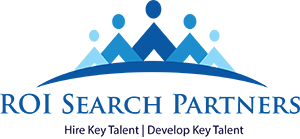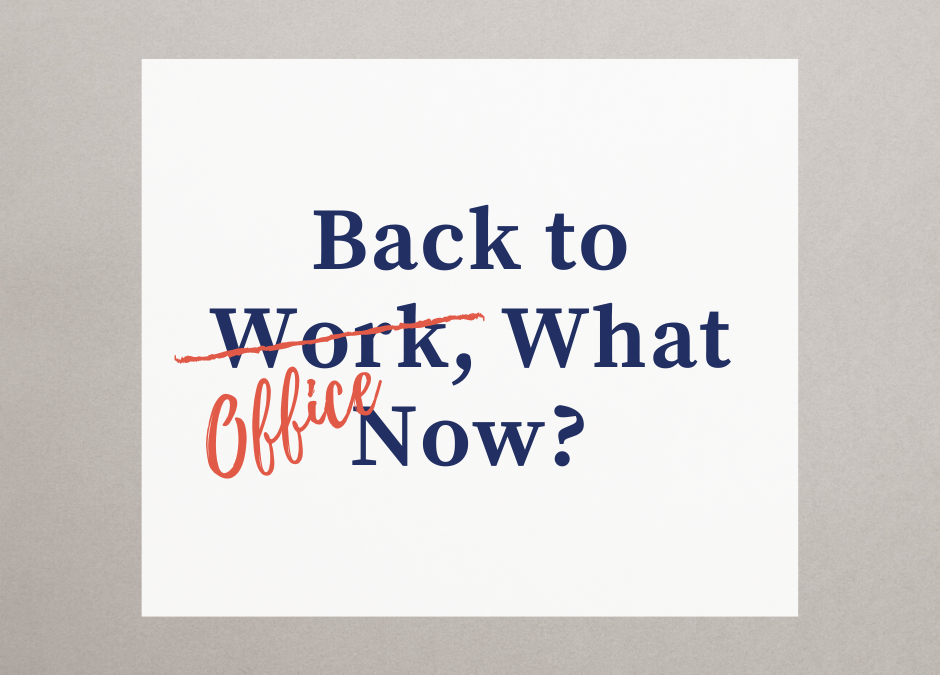Last week we held our third roundtable series with HR leaders around moving forward during the COVID-19 pandemic. This session was entitled “Back to Work, What Now” and even the title sparked a lively discussion right off the bat for several reasons:
- Everyone is at a different place in their return to work plan, some aren’t even back yet and are in no rush to return!
- It’s not return to work, it’s return to “office!” because some never left and some are WORKING at home.
Following are discussion highlights and some resources that might be helpful to you and your organization as you continue to navigate this ever-changing environment.
Culture Considerations
Back in March, many organizations quickly transitioned employees to work from home. But not all employees could do this. Many industries have essential workers that have remained on site this entire time. The language that many of us have been using about “return to work” has created an unintentional divide in some organizations, creating a perception of two classes of workers: “corporate” vs. plant for example. We should consider rephrasing our plans to “return to office” to be more inclusive of the entire employee experience.
Another unintended consequence for those who have been able to work from home is burnout. Many shared the balance that is hard to achieve; with shared office space at home with a spouse, educating children and now kids at home because summer camps & activities have been postponed or cancelled, and/or just working longer hours because there is no divide between work and home anymore. It really has been an eye opener for some organizations in seeing just how dedicated their team members are, and they are at the point of insisting time off and more flexibility into the workday.
Some HR leaders shared things that they are doing to support both team members in the office and those that continue to work from home:
- Recognition of on-site employees with “gratitude” breaks or lunches
- Encouraging and coordinating “breaks for mental health”
- Education around creating a routine and achieving balance for work from home
- Allowing rollover of additional vacation to 2021 for those who are unable to take time off now
- Extending holiday time off and giving an extra week for team members to recharge with their families
- Implementing a summer schedule for 9-hour days and half day Fridays
- Continuing wellness “challenges” to keep team members engaged
- Creating opportunities to bring team members together to give back to the community (even virtually!)
- Maintaining connection with team members through increased communication and transparency of leaders
- Introducing virtual town halls or all hands calls to allow sharing across business lines to increase virtual collaboration
Compliance Considerations
There were many questions around how everyone is handling protocols around return to office procedures including daily health checks, mask requirements, monitoring vacation travel to hot spots and more.
Some of our HR leaders are in industries where working in plants & warehouses are environmentally hot which makes mask wearing uncomfortable. The group discussed alternatives that still comply with social distancing measures to balance the need for safety with heat stress.
With more access to testing, things are shifting in terms of managing risk and contact tracing, and this is creating a whole new challenge for HR around workload. HR for years has tried to shed the image of “policing” employees and it’s almost impossible for HR to manage COVID for their entire organization. Some HR leaders shared that they are shifting this responsibility to front line leaders to interact with team members to perform daily health checks, be aware of travel destinations of team members, and then to document and refer to HR when needed.
Then the question arises as to how to ensure consistency in application of practices (for example “what is a hot spot?”) so that it is not arbitrary around COVID responses to employee situations. The consensus was to stick with the CDC risk assessment protocol and refer to state and county guidelines (knowing that is does differ considerably in some areas.)
Some organizations are utilizing forms through Microsoft, Workday and more to conduct daily health assessments to keep a pulse. Others are collaborating with local health organizations to assess plans to ensure risks are mitigated.
Lastly, some HR leaders shared that they are continuing “special” paid time off for team members who may travel to a hot spot, or who may have been exposed elsewhere, to ensure that an employee is not returning to work for financial reasons and to protect team members from potential risk.
Collaboration and Innovation
We heard at the last roundtable that some organizations have accelerated digital strategies by YEARS, and we heard even more increased innovation stories this time. One HR leader shared that they were piloting work from home in a small pocket before shelter at home was in place, and there was wide concern about productivity and collaboration. Well, then March came, teams went home, not missing a beat in business performance. Innovation projects continued to pick up over the last few months and they are amazed at what they have been able to accomplish in ‘crisis mode’. Things that would have taken months have been done in less than a week, and they feel they have this muscle memory now to be able to tackle other challenges/opportunities. This particular organization has hit a bit of a wall with all the innovation and they are losing steam (due to the burnout we talked about earlier!) The organization has responded with some amazing acknowledgement of team member’s efforts, with additional time off and flexible schedules to encourage team members to disconnect and recharge.
Another company shared that they were forced to look at the use of virtual reality because physical “tours” of their facility were no longer an option. What used to take over an hour now takes 20 minutes, and the customer still gets the same experience of being able to view the layout of the facility and all the equipment available to them.
For some, productivity wasn’t the concern with working from home. The concern was collaboration! In a physical workspace, you have the opportunity for “accidental collisions” of team members where conversation (and usually great ideas) flow naturally and sometimes by chance! How do you create the virtual space for this type of conversation to still occur? We heard several ways HR leaders are addressing this:
- Virtual all hands calls where teams are reporting out/sharing what they are working on, what they may need help with, and more creating an opportunity for cross functional conversation and collaboration
- Creation of Slack channels or MS Teams as virtual collaboration spaces, where some HR leaders are saying they are seeing team members contribute to conversation who normally wouldn’t speak up before!
- Considering building out collaboration workspaces longer term (as we return to office full or part time) to continue creating these opportunities for both organic and formal collaboration
- Focus on simply asking “What do you need? Tell us and let’s figure it out together!”
Lasting changes
What does the work environment look like long term? Well, we still don’t know and many of you feel the same. What we do know is that there is plenty of conversation around focusing on employee needs, and understanding how remote work can benefit our businesses in several ways we didn’t predict. Here is one article we found with some other interesting predictions.
If remote work is working for you, how do you build the business case to show your executives that this might be a profitable strategy for your organization? One HR leader said they use the ‘voice of their employees’. It might not be a full-time arrangement, maybe an 80/20 split for remote vs onsite work. Understand how remote work could widen your talent pool to bring in more diverse candidates. And don’t forget metrics…increased productivity, decreased absenteeism, reduced health care costs, and more.
Our ROI team thanks all who joined us and contributed to last week’s dialogues. Special thanks to those who continue to ask us to gather HR leaders and facilitate the conversations. We love seeing the relationships that develop and continue outside of these sessions!
We are looking forward to continued sharing and dialogue, so stay tuned for an upcoming session.



Recent Comments